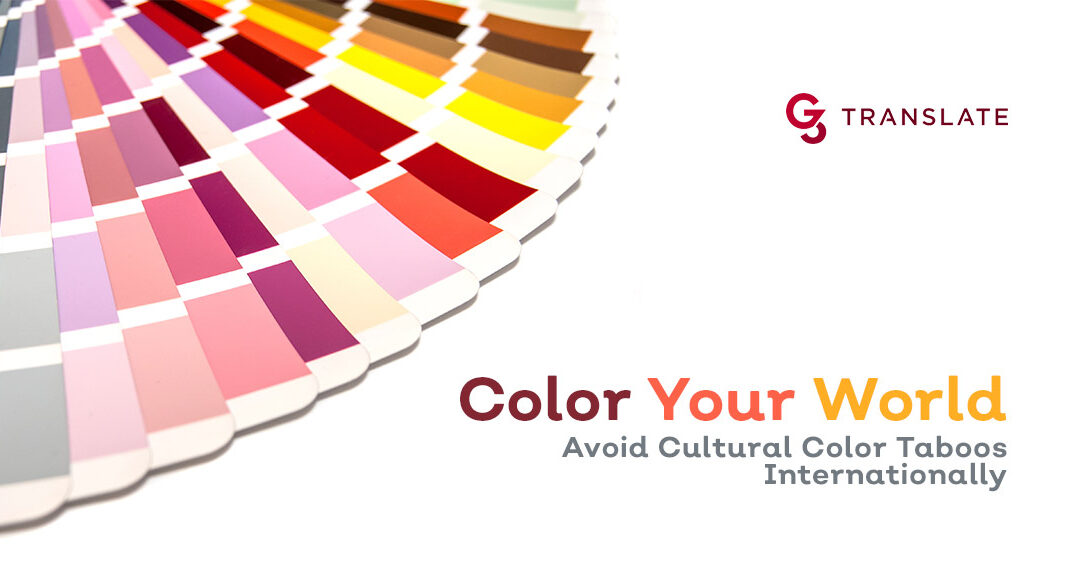You may be a wizard when it comes to boarding passes, booking hotels and moving through various time zones, but your flair for corporate travel won’t take you very far if you offend your international colleagues. Most global marketing professionals know their words and phrases can either make or break them – cultural nuances change the meaning of our messages. But, the colors you use, either through your personal appearance or marketing peripherals, may speak even louder than your voice.
Who knew that blue, one of the most universally safe colors, is actually associated with grave illness and death in Colombia? Or, that a bright, sunny yellow correlates with pornography in China? What a snafu that could be! As you maneuver the global market in an attempt to promote your brand, keep these taboo color symbolisms in mind so that your message rings true and yields optimal results:
Red
While our western culture usually views red positively as signs of excitement, passion, action, love and power, it can also take on a different meaning in other parts of the world. Consider that red symbolizes aggression in Nigeria and mourning and sacrifice in South Africa; you might choose alternative colors as you prepare to market your brand in African nations.
Green
Commonly, green is a color that brings to mind spring, growth, prosperity and good luck. But, it also has some seriously dark connotations around the world. Absolutely forbidden in Indonesia, green symbolizes conflict and the act of taking someone to court. In many South American nations, green signifies death. While it’s a lucky color in Ireland, when a man wears green in China, it suggests that his wife is unfaithful to him. Who knew?
Yellow
Often a symbol of cheer and golden wealth, yellow is welcomed in Japanese, Egyptian, African and Thai nations. However, cultural differences make it more taboo in Germany (signaling envy) and China (again, a symbol of pornography, as mentioned earlier). French nationals are even more offended by yellow as the color has quite a history for them: in the 10th century, yellow marked the door of traitors and criminals, making it synonymous with betrayal and evil. Yellow might not be a good color choice if you’re branding in France!
White
Typically a symbol of purity, peace and goodness, white is associated with death, mourning and bad luck in China, Korea and many other Asian cultures. Women usually wear white when they are deep in mourning. These cultures will naturally miss the western concept of using white to reflect goodness or cleanliness in product packaging or marketing.
Purple
Usually signifying wealth and royalty, purple doesn’t always associate with positive situations. In the U.S., we use purple as a symbol of honor and courage, demonstrated most obviously by the Purple Heart award. However, in the UK, Italy, Brazil, Thailand and India, purple is a common color used in funerals and for mourning. Purple is hardly a happily celebrated color for these cultures.



